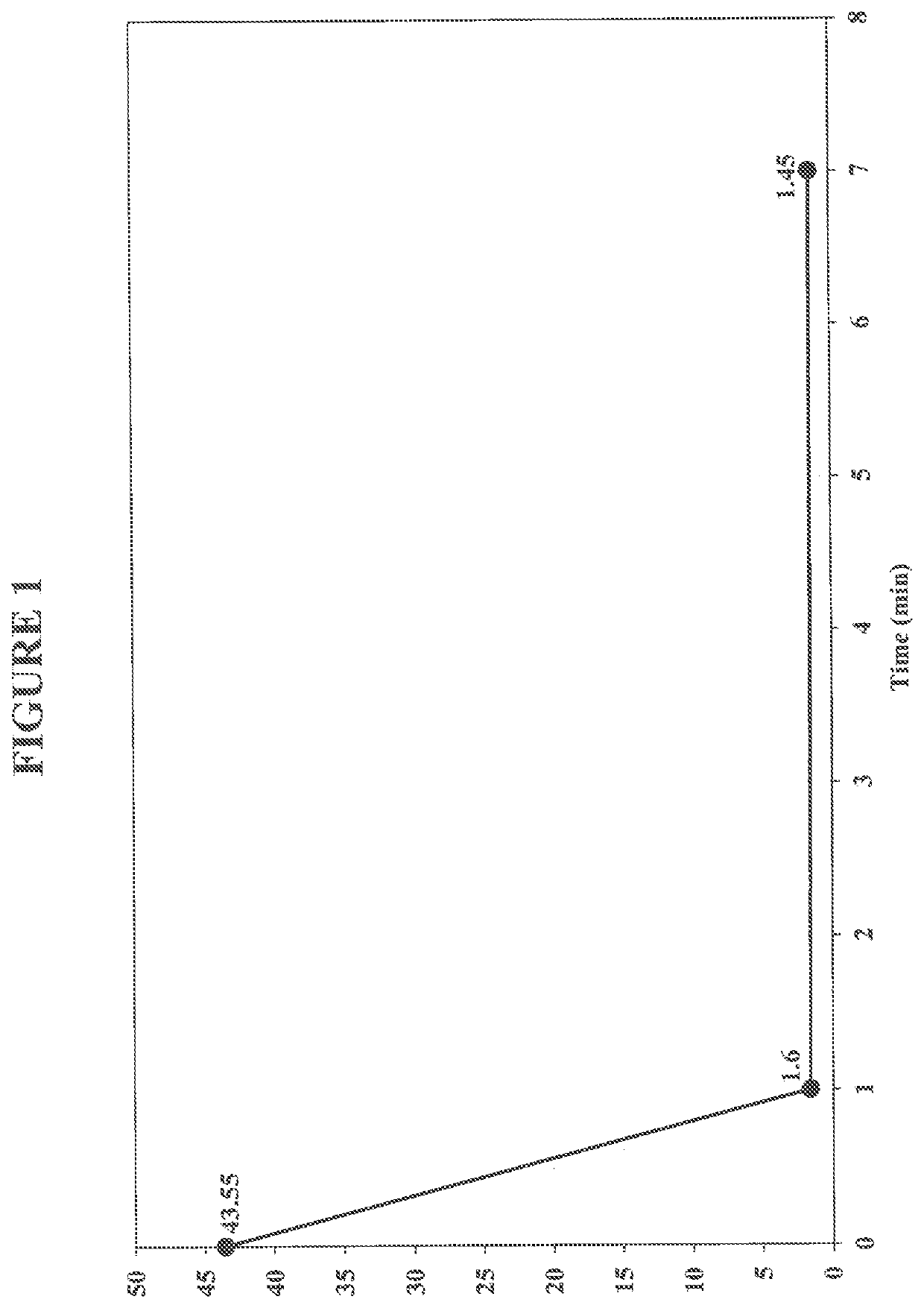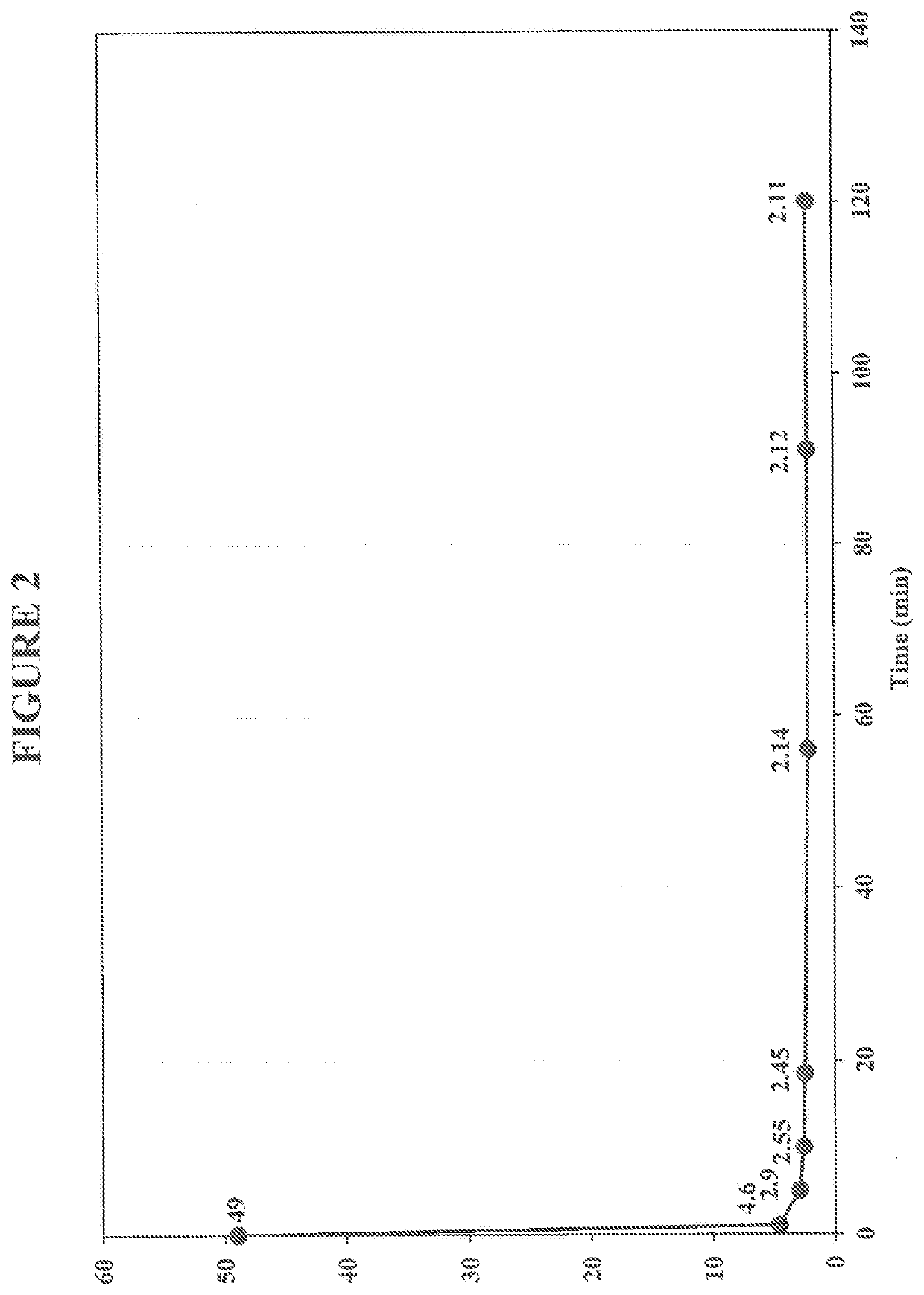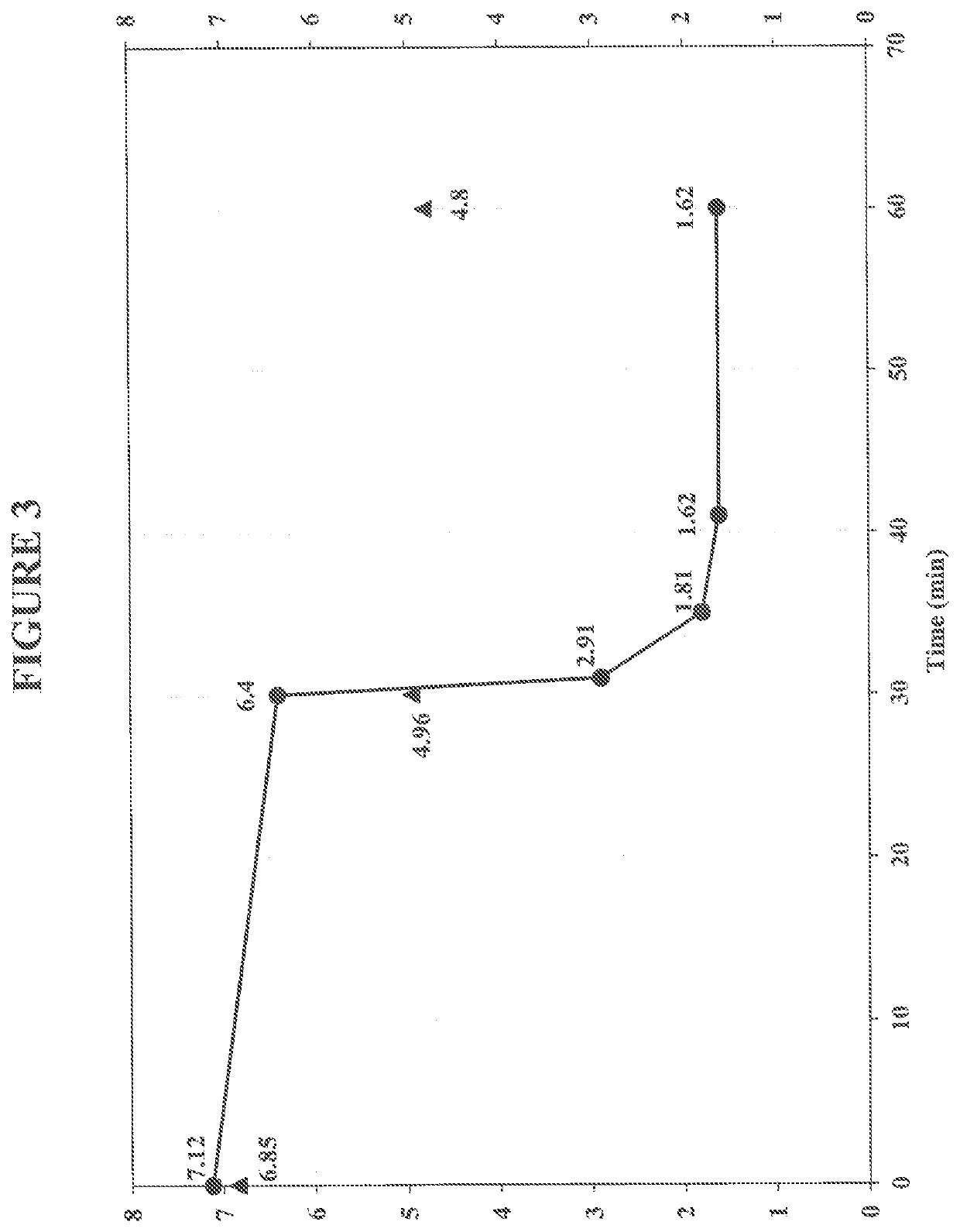Polymer flooding produced water treatment
- Summary
- Abstract
- Description
- Claims
- Application Information
AI Technical Summary
Benefits of technology
Problems solved by technology
Method used
Image
Examples
example 1
Treatment of Produced Water in Aerobic Conditions Using Iron-Citrate Complex
[0108]In this example, a simulated produced water sample was treated under aerobic conditions using an exemplary iron complex comprising ferrous sulfate heptahydrate and citric acid. For this example, the simulated produced water sample included a commercially available water soluble, high molecular weight anionic polyacrylamide based polymer (Polymer A).
[0109]To prepare the simulated produced water samples, one gram of dry powder Polymer A was dissolved in 1 L hot tap water by mixing it for 20 minutes at 500 rpm at 38° C. The initial concentration of the polymer in the simulated produced water solution was 1,000 ppm. The initial viscosity of the simulated produced water sample was recorded.
[0110]Citric acid was added to the simulated produced water sample to obtain a concentration of 100 ppm (0.1 g), then ferrous sulfate heptahydrate was added to obtain concentration of 1,000 ppm (1 g, FIG. 1) or 50 ppm (0....
example 2
Treatment of Produced Water Sample in Aerobic Conditions Using Iron-Citrate Complex Having 100 ppm Ferrous Sulfate Concentration
[0112]In this example, a simulated produced water sample was treated under aerobic conditions using exemplary iron complex comprising ferrous sulfate heptahydrate and citric acid. In this example, the ferrous sulfate concentration was 100 ppm. For this example, the simulated produced water sample was a salt water solution that included a commercially available water soluble, high molecular weight anionic polyacrylamide based polymer (Polymer B), which is representative of a polymer used in polymer flooding techniques.
[0113]To prepare the simulated produced water samples, 30 grams of NaCl were dissolved in 1 L of hot tap water to make produce a 3% salt solution. One gram of a Polymer B was added to the salt solution, and dissolved by mixing it for 2 hours at 500 rpm at 38° C. The initial concentration of the polymer in the simulated produced water solution w...
example 3
Treatment of Produced Water Sample in Aerobic Conditions Using Iron-Citrate Complex Having Ferrous Sulfate Concentration of 10 ppm
[0118]In this example, a simulated produced water sample was treated under aerobic conditions using an exemplary iron complex comprising ferrous sulfate heptahydrate and citric acid. In this example, the ferrous sulfate concentration was 10 ppm. For this example, the simulated produced water sample was a salt water solution that included a commercially available water soluble, high molecular weight anionic polyacrylamide based polymer (Polymer B), which is representative of a polymer used in polymer flooding techniques.
[0119]For this Example one gram of Polymer B was dissolved in 1 L hot tap water by mixing it for 1 hour 40 minutes at 500 rpm at 38° C. The initial concentration of the polymer in the simulated produced water sample was 1,000 ppm. The initial pH was 7.74, and the initial viscosity was 9.76 cP. Then, 30 g of NaCl was added to make 3% salt co...
PUM
 Login to View More
Login to View More Abstract
Description
Claims
Application Information
 Login to View More
Login to View More - R&D
- Intellectual Property
- Life Sciences
- Materials
- Tech Scout
- Unparalleled Data Quality
- Higher Quality Content
- 60% Fewer Hallucinations
Browse by: Latest US Patents, China's latest patents, Technical Efficacy Thesaurus, Application Domain, Technology Topic, Popular Technical Reports.
© 2025 PatSnap. All rights reserved.Legal|Privacy policy|Modern Slavery Act Transparency Statement|Sitemap|About US| Contact US: help@patsnap.com



